The Holden 'Claud Hamilton' Class D14, D15, & D16 4-4-0 Locomotives
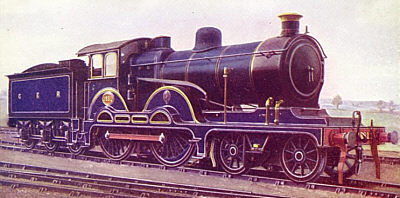
These popular and successful 4-4-0s are usually credited to James Holden, who was the Great Eastern Railway's (GER) CME when the first locomotive No. 1900 Claud Hamilton was built in 1900. However, Holden was out of the country during this period, and Stratford Works Chief Draughtsman Frederick V. Russell was responsible for most of the design work. Claud Hamilton was built to GER order (and class) S46. At that point it was the largest express locomotive on the GER. Although it kept the GER standard sized 7ft driving wheels, it had a large round-topped 4ft 9in boiler. A spacious cab was fitted with two side windows. Well proportioned, Claud Hamilton was a very attractive locomotive in its GER Royal Blue livery, and it quickly won a gold medal at the 1900 Paris Exhibition.
The initial locomotive was followed by forty further locomotives built between 1900 and 1903 in four batches of ten each. These were classified S46 by the GER, but quickly acquired the nickname of 'Clauds' after the pioneer locomotive. The LNER would give these initial locomotives the classification of D14.
The next batch (order D56) was started in December 1903, and added a Belpaire firebox to the design. The 4ft 9in diameter boiler was kept. A Belpaire Claud boiler had actually been built in 1901. However there were problems fitting it to a D14, so in 1902 it was fitted to J16 0-6-0 No. 1189 instead. A total of seventy Belpaire Clauds were built between 1903 and 1911 in seven batches of ten each. Given the GER classification of D56, the LNER would class the Belpaire Clauds as D15. The last four D15s were built with superheaters. Two were built with 18 element Schmidt superheaters, and two were built with 72 element Swindon superheaters and matching GWR (Great Western Railway) jumper-top blastpipes. The GER would settle on 18-element Robinson superheaters with dimensions comparable to the Schmidt superheaters. These were fitted to the superheated D15s in 1914, and would be used on all future superheated Clauds.
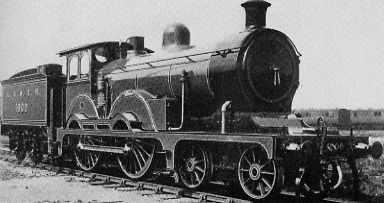
Rebuilds of the original (D14) Clauds with Belpaire fireboxes, started in 1915. Many of these rebuilds were also fitted with Robinson superheaters.
Hill designed a third variation in 1922. This new locomotive had a larger 5ft 1.125in diameter boiler, a superheater, and a Belpaire firebox. A rebuild of No. 1805 to this new design, appeared just after Grouping in March 1923. This was followed by ten new locomotives which were built in 1923. Although built by the LNER, these new locomotives had the GER classification of H88. Nicknamed the 'Super Clauds', the LNER gave them the classification of D16.
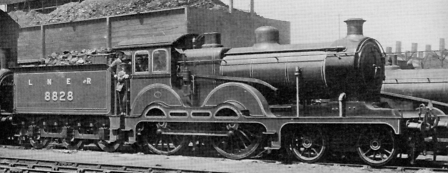
The LNER continued to rebuild the original D14s as Belpaire D15s, and the process was completed in 1931. Most of these rebuilds received superheaters. Superheated D15s had extended smokeboxes fitted from 1926. This variation was recognised with sub-classification in 1927. D15s with short smokeboxes were classed as D15/1, whilst D15/2 was used for the superheated locomotives with extended smokeboxes. The last D15 was superheated in 1933, and all had extended smokeboxes by 1935. As all of the D15s were now D15/2s, the sub-classification was dropped in 1938.
During the 1920s, there were growing reports of steaming problems with the Clauds. The primary cause was the increased use of smaller coal produced by the new LNER coal crushing plants. This coal did not suit the relatively steep firegrates in the Clauds, and increasing train weights mainly exacerbated the problem. A number of solutions were tried from 1930. The best solution proved to be the fitting of a GN-style chimney, a flatter firegrate, and a revised blastpipe arrangement. Tests of this particular arrangement started in 1933, and the order was given in 1936 to alter all of the remaining D15/2s.
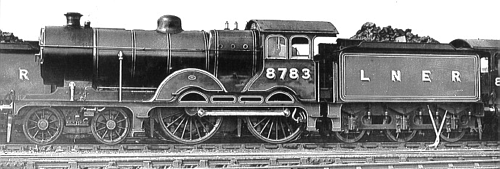
Simultaneous to these rebuilds, the LNER also rebuilt a further 29 Belpaire D15s as Super-Claud D16s. These rebuilds stopped in 1931 with a total of forty D16s. Some of these early rebuilds initially kept their short smokeboxes, but they all had extended smokeboxes by 1931. As with the D15s, the extended smokeboxes were recognised with a 'part 2' sub-classification.
The last major development came in 1933, when D15/2 No. 8848 was rebuilt with a 5ft 1.125in diameter boiler fitted with a round topped firebox. This was followed by a number of similar rebuilds from classes D15/1, D15/2, and D16/2. These were known as 'Gresley rebuilds', and they were classed as D16/3. Between 1933 and 1936, the D16/3 rebuilds that were based on early D14 engines were classed as D14/2 due to their shallower frames. A total of 104 D16/3s had been rebuilt by 1949 when the rebuilding ceased. Most of these kept their original cylinders and slide valves, but twenty had new cylinders and piston valves fitted. The first ten had 8in diameter piston valves, but the second ten had larger 9.5in diameter valves. The piston valves were very successful at improving locomotive efficiency, and these locomotives quickly proved that they were at least the equal of an original B12 4-6-0. An example of this improvement in performance was No. 8810, which in 1936 was recorded passing Wood Green at 90mph with a 155 ton load. Unfortunately the increased power output stressed the frames excessively and fractures were common. Repairs and extra plates were tried, but none were satisfactory. No further D16/3s had piston valves fitted due to a combination of these problems and the advent of World War 2.
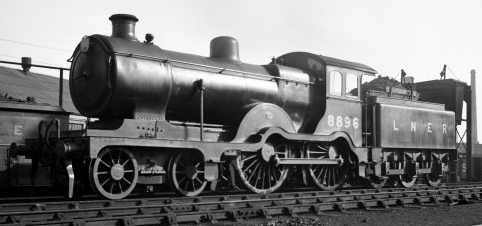
The decorative valences over the coupling rods were removed from D15/2 No. 8885 in May 1933. This was probably an experiment as a part of the ongoing design work for the D16/3 rebuilds. No. 8885 was eventually rebuilt as a D16/3 in July 1937. Only one other D15 had its decorative valenves removed. This was No. 8896, which was involved in an accident at Wormley on 27th November 1934. It re-entered service in February 1935 with the valences removed, and would remain in this condition until it was withdrawn in April 1952.
With the exception of the piston valve rebuilds, all of the Clauds had reversing gear that could be operated by compressed air from a Westinghouse pump. The Westinghouse pump also provided compressed air to operate the tender's water scoop. There was a possible danger that these features could deplete the air required for the locomotive brakes. This was avoided by having two air reservoirs in a large casting under the cab. The casting also acted as a stay for the rear frame. A non-return valve separated the two reservoirs. The pump provided air to the first reservoir, and the brakes, reversing gear, and scoop were operated from the second reservoir. This ensured that there was always a reserve of compressed air in the first reservoir.
A variable blastpipe was fitted. This was an innovative feature at the time, and helped provide economic running. The first seven Clauds were built with both a live steam ejector and an exhaust injector were fitted. However, from the eighth locomotive onwards, two live steam ejectors were fitted instead. The exhaust injectors were quickly replaced on the earlier locomotives.
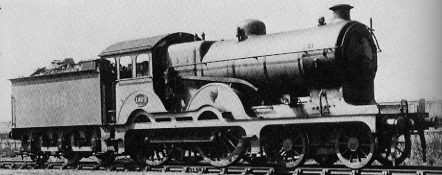
All forty one D14s and the first ten D15s were fitted with Holden's patented oil burning apparatus. This apparatus had new injectors mounted a foot above the firegrate, on the front of the firebox. These injectors sprayed oil into the firebox. Air was preheated using a device in the smokebox, and fed into firebox's oil spray through the central cones in the oil injectors. The effect was to produce a thoroughly atomized and diffused spray mixed with atmospheric air. The oil fuel was preheated. The oil firing was initially a great success. It enabled the Clauds to perform far better than they would have done if they were powered by coal. It was also a useful way of using the oil residue produced by the GER's gas plant. This plant created gas for coach lighting. Oil firing was eventually dropped when changes in coach lighting resulted in less oil residue being produced. This occurred at a time when oil prices were increasing, and the oil burning apparatus proved to be no longer economic. All of the Clauds were converted to conventional coal burning by 1911. Oil burners would occasionally be refitted to some of the Clauds during industrial depressions and coal strikes over the next fifteen years. The last oil burner was removed (for good) in July 1927.
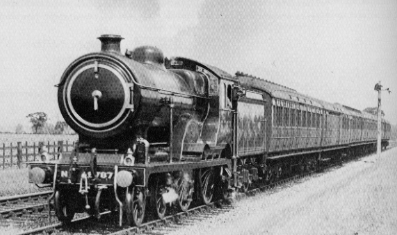
When introduced, the Claud Hamiltons were the largest and most powerful express locomotives on the GER. They were quickly put to work on the principal express services, including passenger trains from London to Ipswich, Norwich, Cromer, Clacton, and the boat trains to Parkeston Quay. Although the D14s had modest dimensions compared to later locomotives, they demonstrated some excellent performances during this period. This was mainly due to the use of regular crews and the oil burners. Some of their most distinguished work was on the Norfolk Coast Express which ran between Liverpool Street and Cromer. Thirty years later, streamlined B17 4-6-0s had only shaved a few minutes off the running time for this service (with slightly longer intermediate stops but a lighter load).
The first Clauds were allocated to the GN&GE Joint Line in 1906, to haul the nightly fast goods trains from Spitalfields to the North of England. At about this time, Clauds were also allocated to Southend to compete with the London, Tilbury & Southend Railway.
A few years later, the introduction of the B12 4-6-0s displaced the Clauds from the principal routes to the Cambridge main line and various cross country routes. It was about this time that the superheaters were being fitted. Although they led to improved fuel and water economy, the displacement of the Clauds to lesser services meant that the superheated Clauds probably never had the chance to demonstrate improved performances.
At Grouping (1923), the Clauds (D14 and D15) were allocated to Stratford (35), Ipswich (19), Cambridge (19), Norwich (15), Colchester (6), Yarmouth (5), March (5), Parkeston (3), King's Lynn (2), Lowestoft (1), and Doncaster (1). Note that Cambridge quickly acquired a large allocation, considering it never had any Clauds for the first ten years or so.
With the exception of moving locomotives from shed to shed, double-heading was usually prohibited on the GER. By the 1920s, double-headed Clauds were authorised and scheduled for the constantly growing morning expresses from Clacton and Walton. These remained double-headed until 1930, when B12s were permitted to work into Clacton.
From 1924, Clauds were occasionally seen on GNR routes into King's Cross for special passenger services. Typically these would be Royal Trains to Cambridge or King's Lynn. King's Cross to Cambridge workings were greatly extended in 1932 with five Claud-hauled expresses per weekday. Most of the locomotives for these services were provided by the Cambridge shed which was not prepared for the motive power requirements. GNR Atlantics (C1 and C2) were drafted in to help, but Clauds would continue to haul many of these services until 1938.
The Clauds were rarely re-allocated when they were rebuilt, despite the increased boiler capacity of all the D16s and increased efficiency of the D16/3s. This resulted in what was essentially a random distribution of the Belpaire Clauds (D15s), Super Clauds (D16/2s), and Gresley Rebuilds (D16/3s).
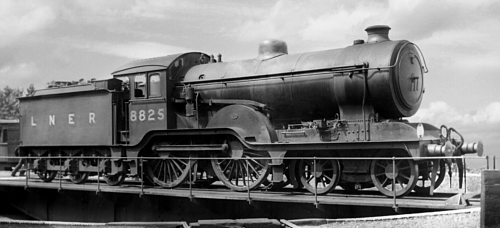
Class D14 became extinct in 1931 when the last D14 was rebuilt as a D15. At the beginning of 1939, the combined allocation of D15 and D16 Clauds was: Norwich (27), Stratford (24), Cambridge (23), Ipswich (12), March (10), Colchester (8), Yarmouth (8), King's Lynn (5), Bury St. Edmunds (2), and Peterborough East (2). Of these, only thirty seven were D15s.
A total of 117 Clauds survived to Nationalisation (1948), of which fourteen were D15s. The remaining D15s and D16/2s were quickly withdrawn, with both variants becoming extinct in 1952. A total of seventeen 'Super Claud' D16/2s would never be rebuilt as 'Gresley Rebuild' D16/3s.
Withdrawal of the D16/3s started in 1945. The piston valve locomotives with their troublesome front frames tended to be withdrawn first. During this period of withdrawal, the Clauds continued to do useful work. They could still be seen on the evening expresses from Liverpool Street to Yarmouth, as well as Saturday extra services. Locomotives from Cambridge were also regularly seen at King's Cross, and the March engines often hauled stopping services to Doncaster. After 1950, the Oxford-Cambridge line was transferred to the Eastern Region and started to be worked by both Clauds and B12s.
An odd allocation was that of eight Clauds to the Cheshire Lines in 1949. Seven were allocated to Trafford Park where local ex-LNER men disliked the ex-LMS (London Midland Scotland) types that were being forced upon them. Although the drivers were used to Great Central Railway (GCR) types, they remained loyal to the LNER and liked the unfamiliar D16/3s. They quickly mastered the firing of the shallow Claud fireboxes which contrasted with the deeper fireboxes on the GCR locomotives. One of the main problems with using Clauds on the Cheshire Lines was that it took lengthy periods of time to obtain spare parts from Stratford Works. Indeed reliability of the aging Clauds began to become a problem in the mid-1950s, and a steady programme of withdrawal started in 1955. No. 62613 was the last D16/3 to be withdrawn in September 1960 from March shed.
Technical Details
The D15 boiler details are for the locomotives fitted with superheaters. The D15 saturated boilers had a total evaporative heating surface of 1678.84 sq.ft.
The piston valve variant of the D16/3 rebuild is listed. The slide valve locomotives had valve gear matching the earlier engines. They weighed 54 tons 18cwt, and had an adhesive weight of 36 tons 6cwt.
| D14 | D15 | D16 | D16/3 | ||
| Cylinders (x2): | (inside) | 19x26in. | 19x26in. | 19x26in. | 19x26in. |
| Motion: | Stephenson | Stephenson | Stephenson | Stephenson | |
| Valves: | slide | slide | slide | 8in & 9.5in dia. piston | |
| Boiler: | Max. Diameter: | 4ft 9in | 4ft 9in | 5ft 1.125in | 5ft 1.125in |
| Boiler: | Pressure: | 180psi | 180psi | 180psi | 180psi |
| Diagram No.: | 28 | 27 | 26 | 28A | |
| Firebox Type: | Round top | Belpaire | Belpaire | Round top | |
| Heating Surface: | Total: | 1624.38 sq.ft. | 1429.9 sq.ft. | 1688.4 sq.ft. | 1731.9 sq.ft. |
| Firebox: | 107.8 sq.ft. | 117.7 sq.ft. | 128.2 sq.ft. | 126 sq.ft. | |
| Superheater: | 154.8 sq.ft. (18x1.1in) | 180.5 sq.ft. (21x1.1in) | 302.5 sq.ft. (21x1.25in) | ||
| Tubes: | 1516.5 sq.ft. (274x 1.75in) | 874.7 sq.ft. (158x 1.75in) | 1035.2 sq.ft. (187x 1.75in) | 957.1 sq.ft. (172x 1.75in) | |
| Flues: | 282.7 sq.ft. (18x 5in) | 344.5 sq.ft. (21x 5.25in) | 346.3 sq.ft. (21x 5.25in) | ||
| Grate Area: | 21.6 sq.ft. | 21.6 sq.ft. | 21.6 sq.ft. | 21.0 sq.ft. | |
| Wheels: | Leading: | 3ft 9in | 3ft 9in | 3ft 9in | 3ft 9in |
| Coupled: | 7ft | 7ft | 7ft | 7ft | |
| Tender: | 4ft 1in | 4ft 1in | 4ft 1in | 4ft 1in | |
| Tractive Effort: | (@ 85% boiler pressure) | 17,096 lb | 17,096 lb | 17,096 lb | 17,096 lb |
| Wheelbase: | Total: | 43ft 8in | 43ft 8in | 43ft 8in | 43ft 8in |
| Engine: | 23ft 6in | 23ft 6in | 23ft 6in | 23ft 6in | |
| Tender: | 12ft 0in | 12ft 0in | 12ft 0in | 12ft 0in | |
| Weight (full): | Total: | 89 tons 11cwt | 91 tons 9cwt | 94 tons 3cwt | 95 tons 3cwt |
| Engine: | 50 tons 6cwt | 52 tons 4cwt | 54 tons 18cwt | 55 tons 18cwt | |
| Tender: | 39 tons 5cwt | 39 tons 5cwt | 39 tons 5cwt | 39 tons 5cwt | |
| Max. Axle Load: | 18 tons 12cwt | ||||
| Adhesive Weight: | 33 tons 4cwt | 34 tons 12cwt | 36 tons 6cwt | 36 tons 9cwt | |
| Max. Axle Load: | 16 tons 12cwt | 17 tons 16cwt | 18 tons 13cwt | 18 tons 4cwt |
Preservation
The last of the D15s was withdrawn in 1952, and the last of the D16/3s were withdrawn in 1960. None survived into preservation.
The Claud Hamilton Locomotive Group has been formed to build a new 'Claud' D16/2. The new locomotive will carry the number 8783 and the name "Phoenix".
Models
Hornby sell a ready-to-run model of the D16/3 for OO gauge (4mm scale). Kits of the D16/3 are also available from Crownline, Little Engines, and PDK Models; and Blacksmith sell a kit of the original D16.
Both ACE Products and S.M.Models produce kits of the D16/3 for O gauge (7mm scale).
Locomotives
The pioneer D14, No. 1900 Claud Hamilton was the only locomotive to be named when built. It gave its name to the entire class which would often be known as the 'Clauds' (D14 & D15) or 'Super Clauds' (D16). No. 8900 (GER 1900) was rebuilt with a Gresley boiler in 1933. The rebuild would have virtually destroyed Frederick V. Russell's medal-winning locomotive, so a wooden nameplate Frederick the Great was created and photographed with the rebuilt engine. Suitably endorsed copies of the photograph were then sent to Frederick V. Russell as a tribute.
Claud Hamilton (then numbered No. 2500) was withdrawn in May 1947. The nameplates were transferred in August 1947 to D16/3 No. 2546 (ex- No. 8855). This was withdrawn in June 1957.
Acknowledgements
Thank you to Mike Morant Collection for the colour illustration of GER No. 1831, and the photograph of D15/2 No. 8896 with the side valences removed.
Thank you to David Hey for the photograph of D16/3 No. 8825.
Thank you to Malcolm Peirson for the photograph of D15/2 No. 8783.